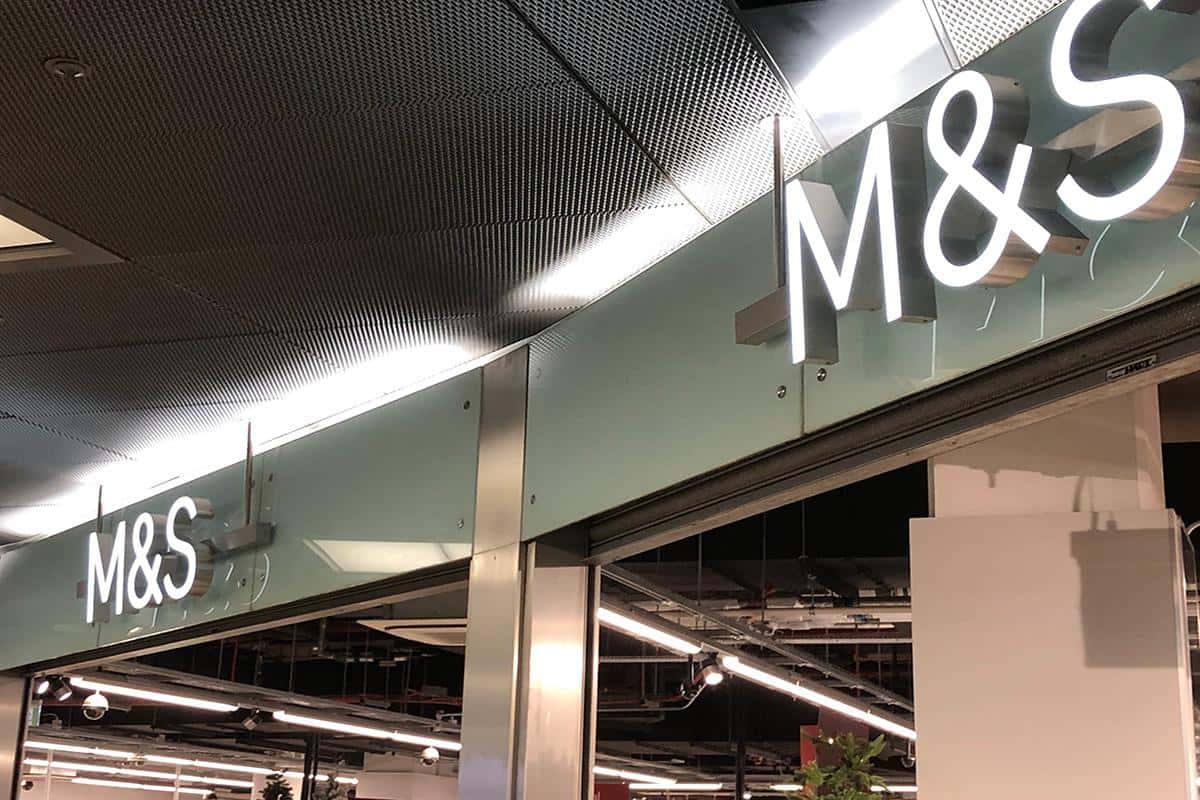Reporting full-year results for the year ending in April 2022, M&S has seen sales grow 7% on their 2019/20 levels, with operating profit up 20%, as it says that “first phase of transformation is complete” and claims to have “fixed the basics”. The retailer warns, however, that it still has a long way to go, that there are still large technology investments to be made, and that inflationary pressures through 2022 will all have a growing impact.
Profit before tax and adjusting items hit £522.9m (2019/20 £403.1m), while statutory profit after tax were £309.0m (2019/20 £27.4m). Food saw the biggest growth, up 10.1%, while M&S’ share of Ocado Retail net profit hit £13.9m, including £7.2m net exceptional costs.
Clothing and home (C&H) sales were up 3.8%, with online growth of 55.6% in this segment and stores down 11.2%. Online C&H sales now 34% of UK C&H sales and nascent brands platform established.
Across the whole company, International online retail sales over £250m vs £100m in 2019/20. This is despite the combined effects of EU border costs and tariffs of £29.6m and an estimated trading impact in the EU of £15m. Withdrawl from Russia and the impact on sales in Ukraine are also likely to cost M&S at least £31m.
However, CEO Steve Rowe, acknowledges that there is still much to do as the company embarks on the next stage of its transformation. “There are many areas where the business has improved but three important infrastructure challenges remain which can still impact the pace of change and recovery.”
Accoridng to Rowe, although M&S has materially changed its digital footprint, some of its core technology systems need investment, most notably in Clothing & Home where planning and supply chain systems can be significantly improved to drive more efficient trading.
The Clothing & Home and Food supply chains both require further investment, too, he says. “In Clothing & Home we have a lot of opportunity to reduce single picking, improve capacity, reduce costs and improve store operations as a result. In Food we need to further improve operations with Gist and invest in and reshape the network.”
Despite radical store closures in the past two years, some of the retailer’s full-line estate remains out of date and poorly located compared to the competition and although it has made progress, there is much still to do to convert stores to a new more efficient shoppable format and make them suitable for an omni-channel era, Rowe concedes.
Although Clothing & Home store sales are running more than 25% below four years ago, M&S has, says Rowe, delivered less than a 10% reduction in space since then, so the imperative both to reduce space and to rotate to newer, better stores remains.
Commenting on the results, Neil Shah, Director of Research at Edison Group says: “This is a strong set of results, but nevertheless management emphasised that they continue to push for further progress in M&S’ transformation. Inefficiencies were identified within the Food supply chain, while the Clothing & Home division requires development to update legacy systems, supply chain and stores. In any other context, these admissions may be discouraging. However, against the evidence of the group’s financial growth, investors will be reassured that strategic progress is well underway and fulfilling an established, long-term vision.”
Shah adds: “M&S is also facing the wider macroeconomic challenges that are plaguing the retail sector. While management emphasised that the business is resilient to these headwinds, they nonetheless anticipate that inflationary pressures are likely to negatively impact sales volumes. The group has started the new financial year from a lower adjusted profit base, and the combination of no business rates relief, no profit contribution from Russia and investment in Ocado means that it does not expect progress from this point. As a result, the fulfilment of the group’s strategic development will play a key role in defining investor sentiment in FY23.”
Walid Koudmani, chief market analyst at financial brokerage XTB says: ” While inflationary pressures and troubling economic conditions remain concerning, the business is well positioned for inflationary headwinds and the next phase of transformation as it continues to focus on its online business and foreign activity. Despite this, investors appear to be uncertain with share price fluctuating at the start of today’s trading session.”









